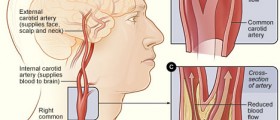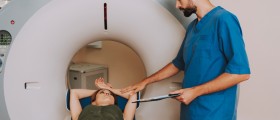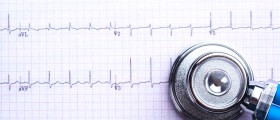Carotid artery is one of the most important arteries in our body. It has the role to carry blood rich in oxygen to the brain. When this artery is affected by certain disorders, it can have very serious consequences because the brain deprived of oxygen can be seriously damaged. One of the disorders that can affect the carotid artery is its blockage.
Carotid Artery Blockage
In the human body there are two carotid arteries and they are located on both sides of the neck. When the blood circulation through these arteries is somehow impaired, the brain does not receive enough amounts of blood and oxygen. When it occurs, the person can experience hallucinations, or even stroke and death.

Carotid artery blockage is caused by the formation of plaque on the walls of the artery. The plaque is formed due to the accumulation of fatty materials and cholesterol. Because of that, the arteries become narrowed or completely blocked over time.
The most common symptoms of carotid artery blockage are headaches, vision problems, and difficulty speaking. Gradually, the symptoms become worse and loss of motor coordination and passing numbness in various parts of the body occur.
Carotid Artery Blockage Test
It is important to visit a doctor when the above-mentioned symptoms are noticed. After that, the patient will undergo many carotid artery blockage tests in order to establish the degree of the blockage and the rate of blood circulation. The most common carotid artery blockage tests are magnetic resonance imaging, angiography, computer tomography, computed tomography angiography, and carotid duplex ultrasound.
When magnetic resonance imaging – MRI is used, the image of the carotid artery clearly shows the blockage by the means of radio waves and magnetic fields.- Large trials of CEA including the North American Symptomatic Carotid Endarterectomy Trial have shown a 17% reduction in absolute risk of stroke over two years in patients with recent cerebrovascular symptoms and high-grade carotid stenosis.
- In asymptomatic patients, studies such as the Asymptomatic Carotid Atherosclerosis Study have shown more modest benefits of CEA in patients with high-grade stenosis. Advances in treatment since completion of these studies, including widespread use of statins, have further eroded the perceived benefit of intervention in asymptomatic patients leading many to advocate only medical therapy in the absence of cerebrovascular symptoms.
- Magnetic resonance imaging (MRI) is emerging as the best candidate for augmenting stenosis with additional diagnostic features pertinent to patient management. Numerous MRI studies have identified features of carotid plaque associated with both prior and subsequent cerebrovascular events.
- In regards to target populations, two classes of patients stand to benefit from MRI of carotid atherosclerosis. First, patients with cryptogenic stroke, in which the cause is unknown, account for as many as 40% of all strokes. Evidence suggests carotid disease is a prime culprit in many of these, but markers other than stenosis are needed to verify carotid disease as the cause. A second group of patients that may benefit from carotid MRI are those with high-grade asymptomatic stenosis. In the past, these patients received a net benefit from CEA, but this benefit is waning with better medical management.
- For both of these groups, MRI of carotid atherosclerosis has the potential to identify high-risk lesions in those patients who would benefit from intervention and the optimal type of intervention.
Another test is cerebral angiogram where the blockage is determined by means of X-rays and a dye, which is injected into the carotid artery before the X-rays.
Computer tomography – CT is a carotid artery test in which 2D and 3D scans of the brain clearly show the rate of blood circulation and the blockages in the arteries.
Sometimes it happens that both angiography and computer tomography are needed. In such cases, this procedure is called computed tomography angiography – CTA.
In carotid duplex ultrasound, a specialized probe is used to produce the image of the carotid arteries by sending the sound waves through the arteries. Of all these above-mentioned tests, it is considered that the best test for the carotid artery blockage is computer tomography.












_f_280x120.jpg)




Your thoughts on this
Loading...